Retirement is a natural part of the career journey, but the way in which workers retire is changing. In recent years, and perhaps inspired by the more well-known “quiet quitting” phenomenon, a growing number of workers have been choosing "quiet retirement." Quiet retirement refers to the process of retiring from work without making a formal announcement or taking any significant steps to wind down work-related responsibilities. It is a subtle approach to retirement that can have a significant impact on companies and the U.S. job market.
Unlike a traditional retirement, where an individual might have a retirement party, give notice to their employer, or otherwise make their retirement known to their colleagues and network, quiet retirement is characterized by a more subtle and gradual transition away from work. This can involve scaling back hours, reducing workload, or taking on a more advisory role while maintaining some level of involvement in work-related activities. Quiet retirement is often associated with older workers who may be looking to reduce their work-related stress or transition into retirement while maintaining some level of connection to their professional networks or careers. Explore the impact of quiet retirement on organizations, the workforce as a whole, and how partnering with a recruiting and staffing agency can help businesses prepare for and address the challenges presented by this trend.
The Impact of Quiet Retirement on the U.S. Job Market
The impact of quiet retirement extends beyond individual businesses and can have a significant impact on the U.S. job market. As more workers participate in quiet retirement, the labor force participation rate for workers aged 55 and older is projected to decline, which can lead to workforce shortages and impact economic growth. The Bureau of Labor and Statistics projects that the labor force participation rate for workers aged 55 and older will decline from 42% in 2020 to 37.9% in 2030. In comparison, the participation rate for workers aged 25 to 34 is expected to hold steady at approximately 81% between 2020 and 2030.
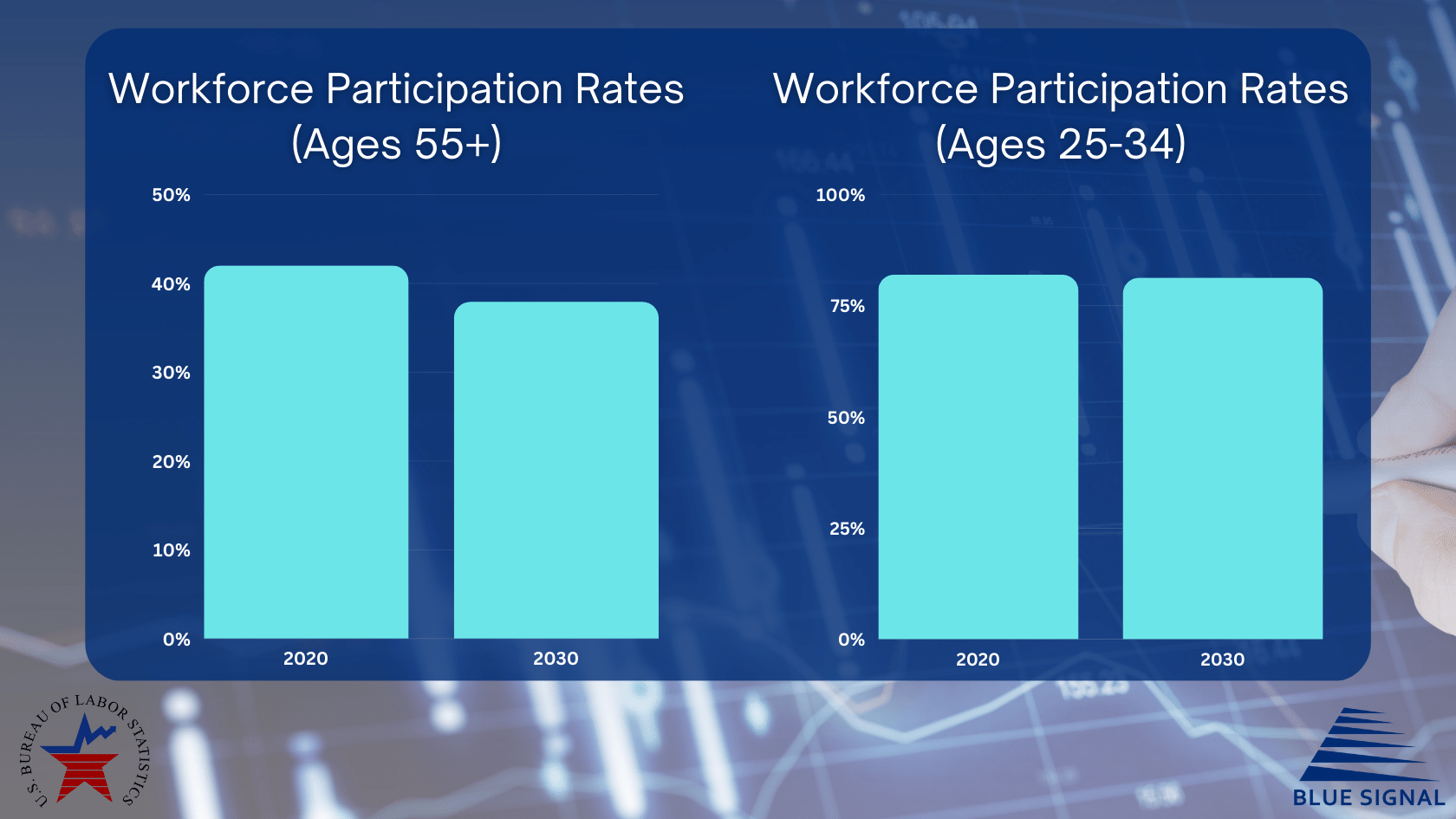
Certain industries, such as healthcare and manufacturing, rely heavily on experienced workers. The retirement of these workers can lead to a shortage of skilled talent, which can be challenging to address. A survey conducted by Willis Towers Watson found that 75% of employers believe that their workforce demographics will shift significantly in the next five years due to aging workers, and 81% are concerned about the impact of talent shortages.
To address the challenges of quiet retirement, businesses and policymakers must develop proactive strategies, such as offering incentives for older workers to stay in the workforce and investing in skills training programs for younger workers.
The Impact of Quiet Retirement on Companies
Quiet retirement can lead to several challenges for businesses. When experienced employees engage in quiet retirement, companies may face a significant loss of institutional knowledge and expertise. According to a survey conducted by the Society for Human Resource Management, 72% of organizations have implemented knowledge transfer programs to help retain critical knowledge and skills as older workers retire.

As older workers retire, organizations may struggle to find qualified replacements, leading to reduced productivity and potential talent shortages. One way to re-engage employees participating in quiet retirement is to offer part-time or flexible work arrangements. Many older workers may be interested in continuing to work, but may not want to work full-time or on a set schedule. By offering part-time or flexible work arrangements, businesses can tap into this pool of experienced workers and retain their knowledge and expertise.
Businesses must prioritize knowledge transfer and talent retention strategies to address the challenges of quiet retirement. These strategies may include implementing new initiatives such as mentorship programs and flexible work arrangements. Mentorship programs can be an effective way to re-engage employees participating in quiet retirement. By pairing older workers with younger workers, businesses can facilitate the knowledge transfer and help younger workers develop the skills and expertise needed to fill potential talent gaps.
Conducting stay interviews can be an effective way to understand the needs and motivations of employees participating in quiet retirement. Businesses can tailor their re-engagement strategies to the specific needs of these employees by asking employees what they need to continue working and what they find most fulfilling about their work.
Leveraging a Recruiting and Staffing Firm to Address Quiet Retirement
As we have discussed, the implications of quiet retirement can be significant, but there are solutions to help businesses navigate this trend. One such solution is partnering with a recruiting and staffing agency like Blue Signal, which can help companies access a wider pool of talent, streamline their hiring processes, and develop talent retention and succession plans.
Accessing a wider pool of talent is key to mitigating the impact of quiet retirement. Recruiting agencies have a deep understanding of the job market and access to a larger network of professionals, including experienced workers who may be looking to move into high-level or executive-level roles. This can be particularly helpful in industries facing a skills gap or a shortage of qualified workers.
Moreover, recruiting agencies can help businesses streamline their hiring processes, reducing time-to-fill and minimizing the impact of talent gaps. The recruitment experts at Blue Signal, for example, have in-depth knowledge of hiring best practices and can offer guidance to companies on optimizing their recruitment processes. For instance, they can recommend using technology to automate repetitive tasks, improve the candidate experience, and enhance the quality of hires. In fact, one of Blue Signal’s own recruiting managers wrote a blog on optimal hiring practices from a recruiter’s perspective.
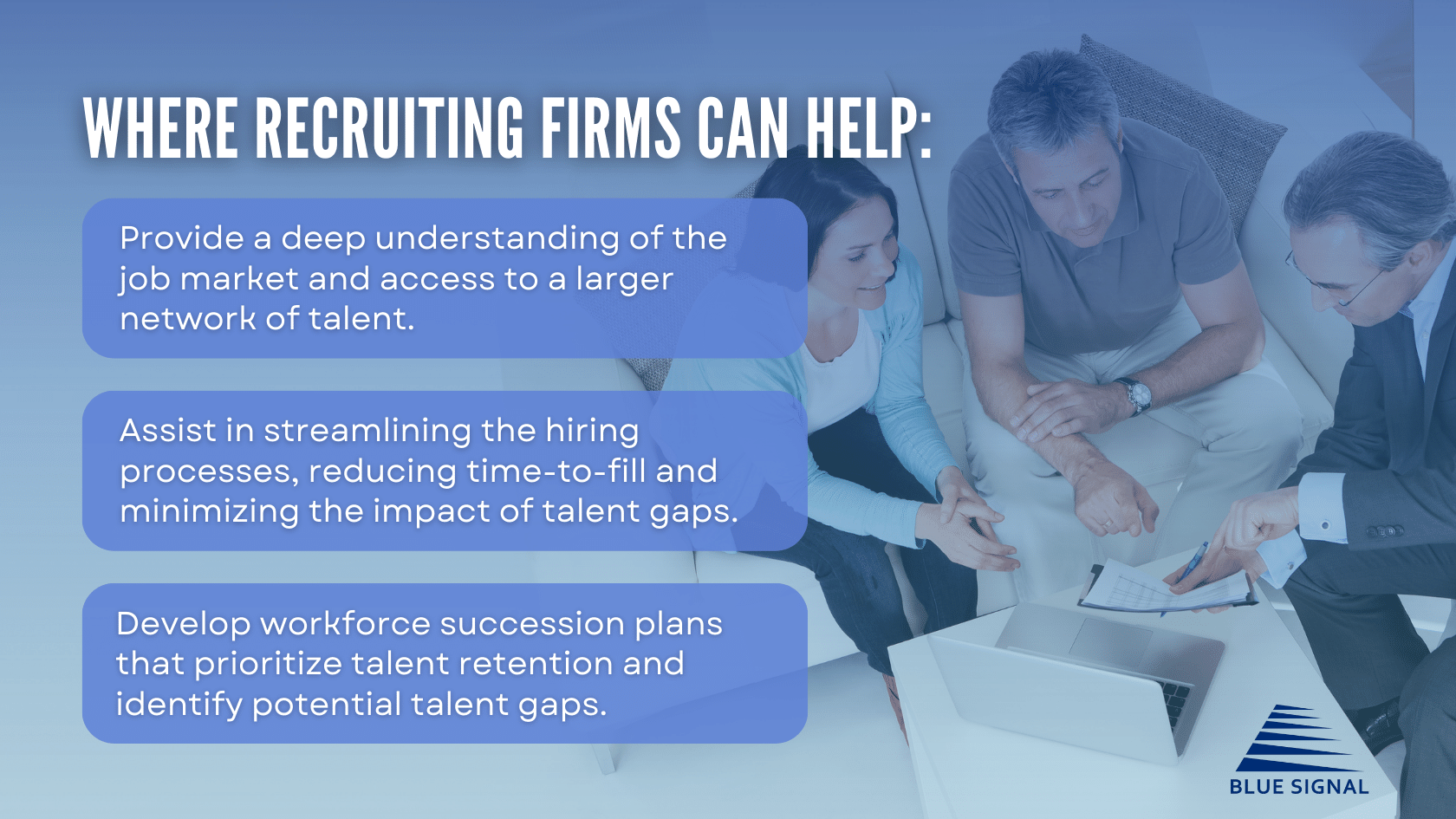
In addition, recruiting and staffing firms can help businesses develop workforce succession plans that prioritize talent retention and identify potential talent gaps. These plans can include strategies for engaging older workers, such as phased retirement, job sharing, and flexible work arrangements. They can also help companies identify and develop high-potential employees and create a plan to ensure that they are ready to step into key roles.
A recruiting firm can also facilitate communication and collaboration between quiet retirement employees and their colleagues. This can involve creating opportunities for mentoring and knowledge sharing, promoting teamwork and collaboration, and creating a sense of community and belonging in the workplace.
Conclusion
As the American workforce continues to age, quiet retirement will remain a growing trend that businesses will need to address. Companies that fail to plan for talent retention and succession may find themselves facing significant challenges and lost opportunities. However, working with a recruiting or staffing agency can help businesses access a wider pool of talent, streamline their hiring processes, and develop proactive strategies for talent retention and recruitment.
At Blue Signal, we specialize in helping companies navigate the challenges of the modern job market. Our team of experienced recruiters has the knowledge and expertise to help businesses of all sizes and industries stay ahead of the curve.
Partner with us for your next hire.
Set up a free consultation with a recruiting manager. Tell us about your hiring need.
By submitting this form, you consent to receive communications from Blue Signal, including phone calls, emails, and text messages.
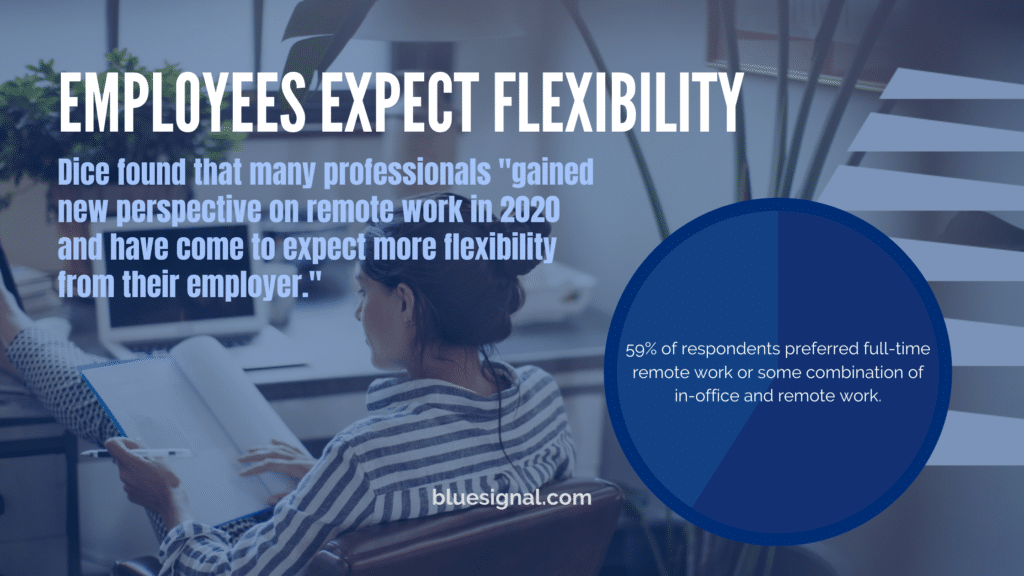
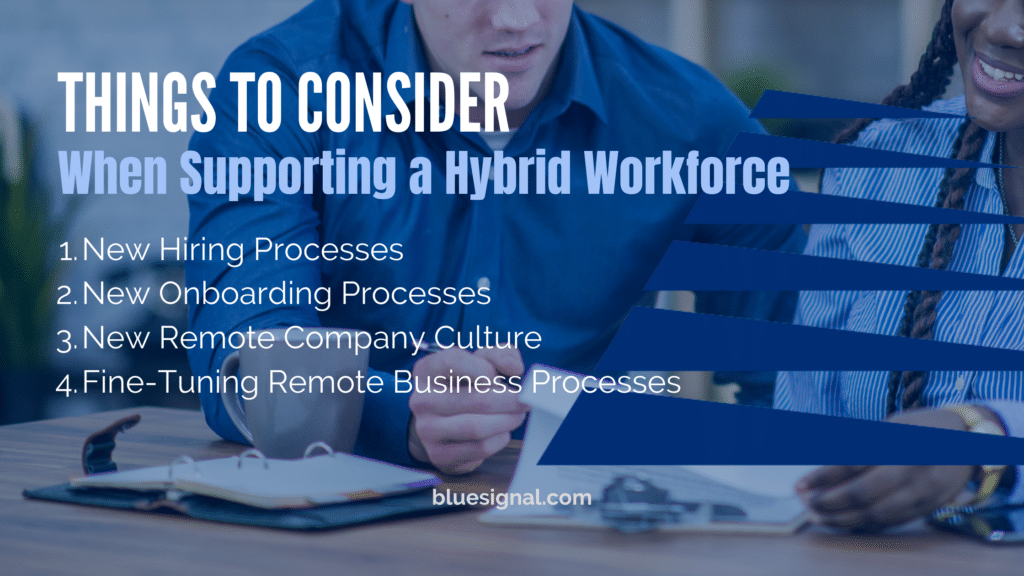





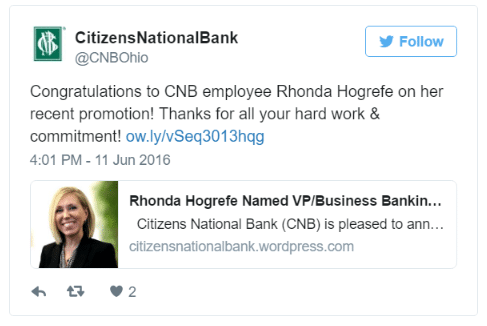
 You can’t monitor everything (nor should you want to), but you can get an idea of your employees’ social media habits before and after you hire them. Trying to shut people down will only fan the flames.
You can’t monitor everything (nor should you want to), but you can get an idea of your employees’ social media habits before and after you hire them. Trying to shut people down will only fan the flames.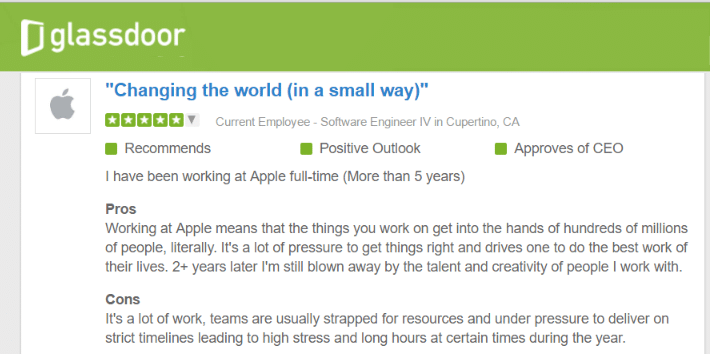

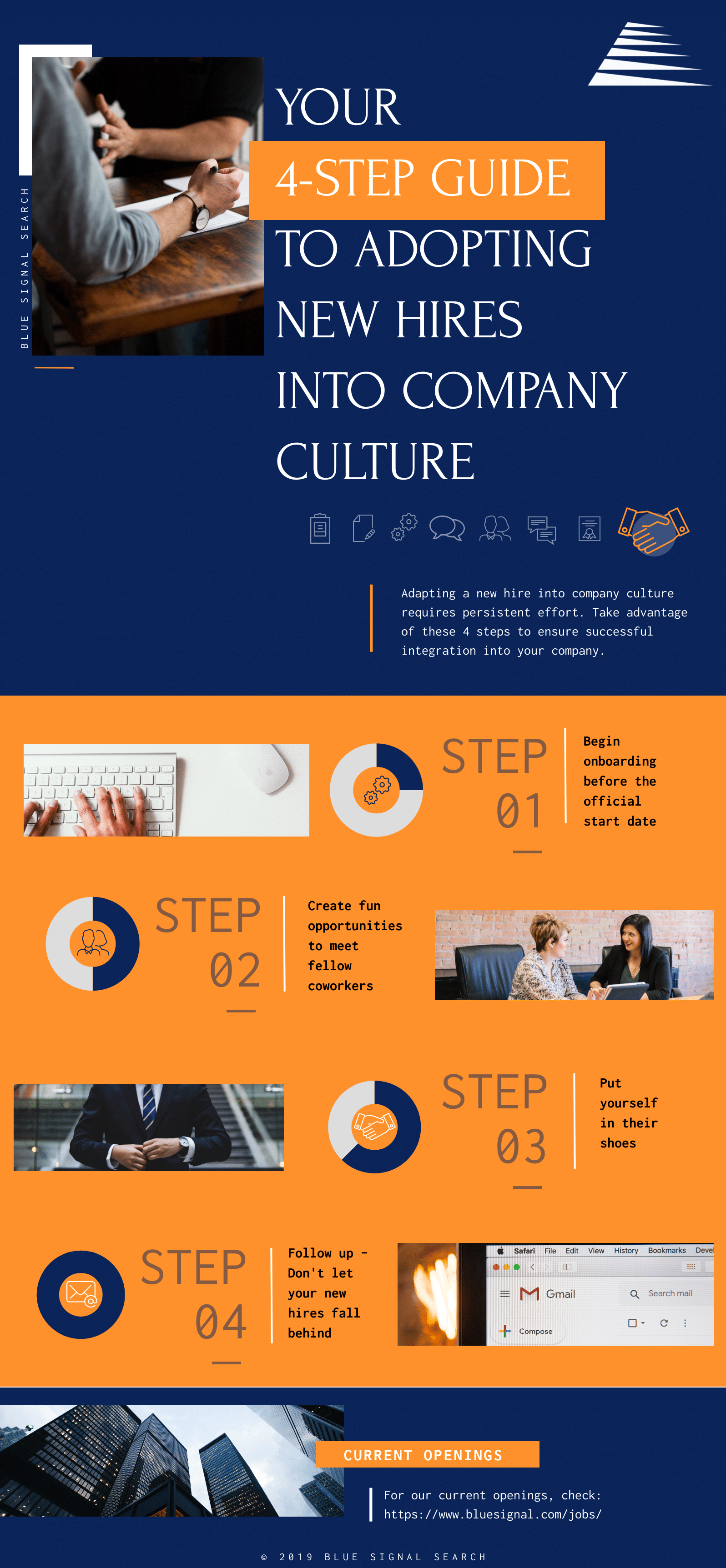
 Give plenty of warning. Never surprise someone with a performance review. Preferably set them at regular intervals through the year so that employees know when they are coming up.
Give plenty of warning. Never surprise someone with a performance review. Preferably set them at regular intervals through the year so that employees know when they are coming up.

 The “candidate pipeline” is a popular buzzword, but in practice, it is difficult to build one as an employer. For starters, most top job candidates will not talk to a potential employer unless there is an actual job opening—which defeats the purpose of building a pipeline. By contrast, a recruiter has a much easier time building a rolodex of candidates who may be interested if the right opportunity comes along.
The “candidate pipeline” is a popular buzzword, but in practice, it is difficult to build one as an employer. For starters, most top job candidates will not talk to a potential employer unless there is an actual job opening—which defeats the purpose of building a pipeline. By contrast, a recruiter has a much easier time building a rolodex of candidates who may be interested if the right opportunity comes along. Recruiter fees are expensive, but so are hiring mistakes and never-ending hiring cycles. Recruiters also make the hiring process cheaper in several ways. For starters, they source within the hiring manager’s target salary range whenever possible, keeping costs down.
Recruiter fees are expensive, but so are hiring mistakes and never-ending hiring cycles. Recruiters also make the hiring process cheaper in several ways. For starters, they source within the hiring manager’s target salary range whenever possible, keeping costs down. Top candidates know they are highly sought-after. They are regularly approached by recruiters or head-hunters and rarely apply to open jobs. Do not treat them as any other applicant; roll out the red carpet.
Top candidates know they are highly sought-after. They are regularly approached by recruiters or head-hunters and rarely apply to open jobs. Do not treat them as any other applicant; roll out the red carpet. The interview area will give the candidate a reasonable expectation of the company’s work environment. Candidates intentionally put themselves in hyper-observant mode and notice everything. Take a walk along the route an interviewee would take through the building, and observe the surroundings through their eyes.
The interview area will give the candidate a reasonable expectation of the company’s work environment. Candidates intentionally put themselves in hyper-observant mode and notice everything. Take a walk along the route an interviewee would take through the building, and observe the surroundings through their eyes.
 Candidates hear actions, not words. A prompt, efficient hiring process is evidence of the speed of daily business within the team. The most sought-after candidates stay busy. Time is money for candidates as well as for companies, and the time investment for a full interview cycle represents a substantial opportunity cost for them.
Candidates hear actions, not words. A prompt, efficient hiring process is evidence of the speed of daily business within the team. The most sought-after candidates stay busy. Time is money for candidates as well as for companies, and the time investment for a full interview cycle represents a substantial opportunity cost for them.